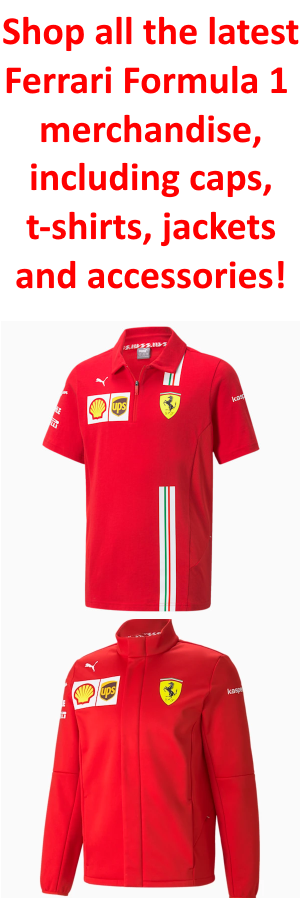The climate forecast stays unsure forward of the race. The most recent projections estimate quick bursts of rain till 12:00 native time, which might give the monitor two hours to dry. The possibility of rain through the Grand Prix window has dropped to 40%, making it potential the race might be held completely in dry circumstances. Not like in earlier years, simulations point out {that a} one-stop technique would be the best, although that doesn’t imply there gained’t be on-track motion, particularly contemplating the McLaren vehicles will not be ranging from the entrance. Simone Berra, Chief Engineer at Pirelli, outlines the choices out there to the front-runners.
In the direction of a One-Cease Race
Berra has no doubts concerning the strategic theme of the weekend: “The important thing level is the decrease degradation in comparison with what we anticipated. The race tempo simulations in FP1, and a few additionally in FP3, confirmed a really constant onerous tyre with virtually no degradation. The medium is strong however nonetheless requires some administration. In FP1, the mushy tyre additionally managed to finish a number of consecutive laps competitively, so we now have three compounds in play. Clearly, we anticipate the onerous and medium to be essentially the most used within the race.”
The strategic image is shaping up otherwise from previous editions: “If it’s dry, we anticipate a one-stop race, with a major time benefit over the two-stop methods seen in previous years. We all know it is a monitor the place thermal degradation is excessive, however in all probability the brand new compounds, new asphalt, and the decrease temperatures seen in current days have helped cut back put on. In comparison with the preliminary concept of a two-stop, based mostly on the info we’ve collected, on paper a single cease now seems to be the quickest technique.”
The Choices on the Desk
Pirelli’s main suggestion is beginning on the mediums and switching to hards between laps 19 and 25. An alternate is to start out on softs to profit from the additional grip off the road, although this comes with greater thermal degradation. In that case, an early cease could be required between laps 10 and 16, adopted by 40 laps on the onerous tyre—a demanding activity when it comes to tyre administration.
“In the intervening time, two-stop methods are barely slower on paper,” Berra explains. “Proper now, it’s onerous to contemplate a two-stop as a result of everybody has returned a set of onerous tyres, apart from Lando Norris, who’s the one one that would realistically go for that technique. The others solely have one set of hards and most solely have one set of mediums. Because of this in the event that they needed to go for 2 stops, they’d have to make use of all three compounds, within the order soft-medium-hard, which on paper remains to be solely the third-fastest technique. In that case, the primary cease would come between laps 8 and 14, with a second cease round laps 28–34.”
Max Verstappen’s Benefit
Although the only cease seems to be the best choice on paper, it’s not unrealistic to assume McLaren may strive one thing totally different if they will’t get forward of Verstappen, given how tough overtaking is at Suzuka. Nevertheless, Norris, the primary chaser on the grid, solely has one set of medium tyres in comparison with two for his rivals, who may implement Pirelli’s fourth advised technique: medium-hard-medium. This represents a bonus for Verstappen, whose further set of mediums is extra invaluable than Norris’s extra set of hards.
Berra displays on the quick race simulations from FP3: “Verstappen ran on the onerous, which may be very constant however gives much less grip. Alternatively, Antonelli did a stint on the medium, which had barely greater degradation than the onerous, however he persistently lapped quicker than Max Verstappen. This confirmed us that the onerous is extra constant, however over a 20–25 lap stint it could yield barely slower common occasions. Holding on to 2 units of C1s (onerous) doesn’t appear helpful, particularly contemplating that the C2 (medium) labored very properly in China.”
One other issue to contemplate is the probably washout of the monitor because of anticipated in a single day rain. The lack of rubber often will increase the danger of graining, however Berra doesn’t seem anxious: “There’s a little bit of a graining danger, however we’ve solely actually seen it in a number of remoted instances. I’d say it’s very situational and extra associated to particular groups and setup selections relatively than a normal tyre problem.” On Friday’s simulations, Norris himself complained about graining, a phenomenon to which McLaren is especially delicate. Ferrari hopes to reap the benefits of this, additionally conscious that on paper Pink Bull is much less aggressive within the race than in qualifying—a minimum of in dry circumstances.
A lot will rely on how drivers handle the opening snake part. “The primary sector is vital,” Berra warns. “That’s the place the brand new asphalt is, which has challenged the drivers as a result of they’ve needed to discover the precise grip steadiness between the previous, very tough floor and the brand new, very clean one with excessive adhesive grip. In that sector, drivers not solely handle thermal degradation higher but additionally graining, which tends to seem extra on circuits with new, clean asphalt. The primary sector can be essential.”



